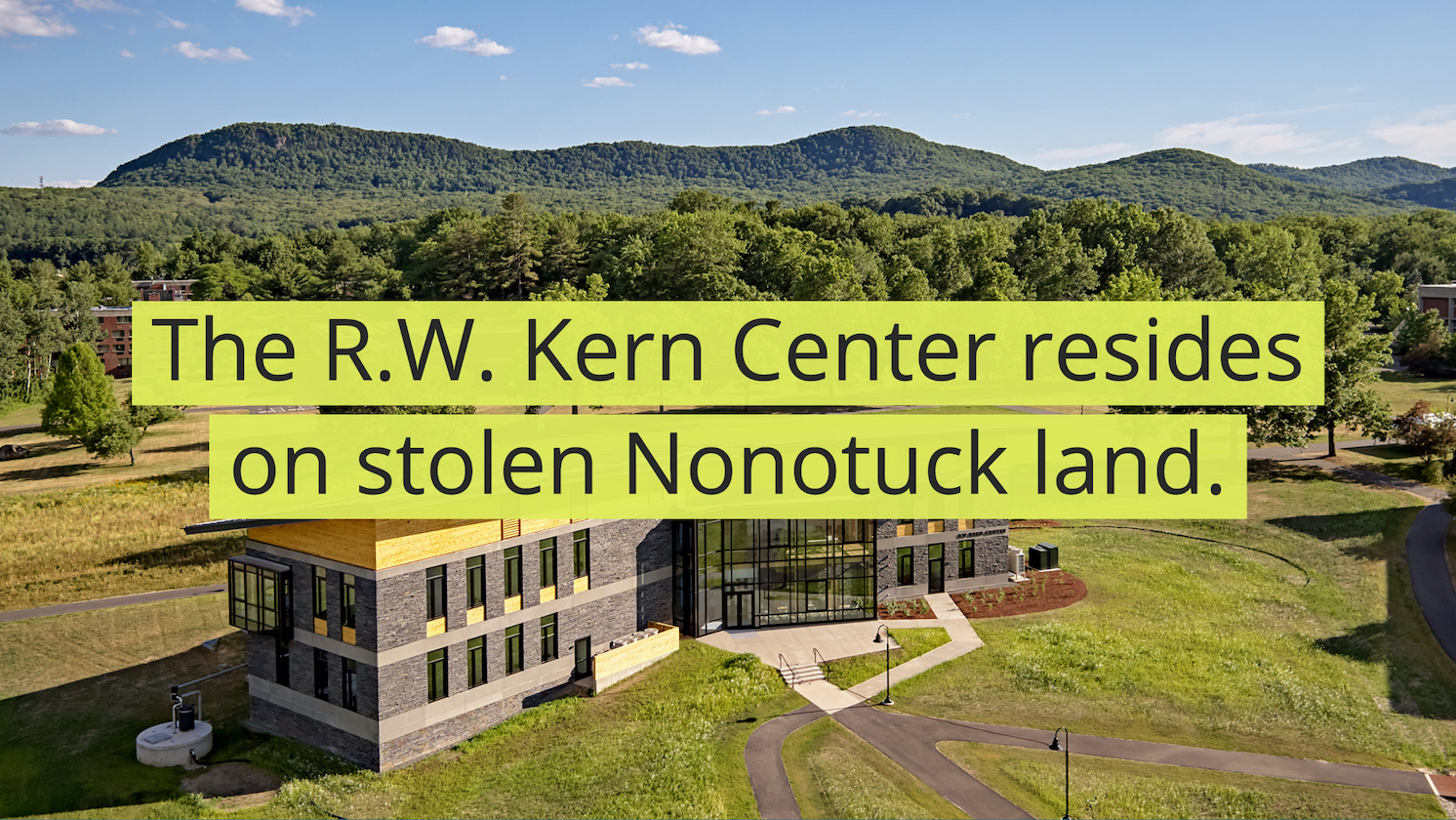“The year 2004 may represent three hundred and fifty years in which Euro-American settlement and history overwhelmed Native presence in Northampton… but it also marks an opportunity to do justice to all of our interwoven histories, by finding ways to work with Native peoples, respectfully recovering Native histories that have not vanished, that are still so close at hand.” – Margaret Bruchac in “Native Presence in Nonotuck and Northampton” (2004)
The R.W. Kern Center resides on stolen Nonotuck land. We acknowledge the history of colonialism and the genocide of Indigenous people that brings us to this land today. We’d also like to acknowledge our neighboring Indigenous nations: the Nipmuc and the Wampanoag to the East, the Mohegan and Pequot to the South, the Mohican to the West, and the Abenaki to the North1.
The Nonotuck, just one of many Indigenous Algonkian groups, lived in the Kwinitekw (Connecticut River) Valley—specifically in parts of what we now call Northampton, Hadley, and Amherst—for many generations before the arrival of European settlers in the early 17th century. The Nonotuck people took advantage of their location in the Kwinitekw Valley, where they could grow maize (which they ate and traded) and other crops2, hunt, fish, and gather. Their contribution to the fur trade, until over-hunting, was beaver3 and they had strong relationships with many regional Indigenous groups.
It was not long after their arrival to the “long-inhabited, carefully managed landscape” of the Kwinitekw Valley3 that English and Dutch settlers extinguished a large number of Nonotuck peoples with the introduction of smallpox and other diseases, as well as conflict both with European settlers and other Indigenous tribes, as prompted by European settlers. Throughout the 17th and 18th centuries, remaining Nonotuck and other Indigenous people in the Kwinitekw Valley fled north, where many Nonotuck peoples joined the Abenaki, another Algonkian group4.
Acknowledging that we reside on land stolen from Indigenous people is just a first step toward supporting Indigenous communities. We encourage all of our fellow green buildings to learn about the Indigenous history of the land they occupy. If you’d like a place to start, check out Native Land to see what Indigenous land you occupy and Native Governance Center’s guide to Indigenous land acknowledgement.



2 comments
Comment by Friendly visitor
Friendly visitor July 2, 2020 at 10:07 pm
ok so you acknowledge the history of the land.. and then what? how are you guys supporting indigenous groups in addition to the acknowledgement??
Comment by R.W. Kern Center
R.W. Kern Center July 9, 2020 at 2:03 pm
Hi there. Thanks for your comment. We see our land acknowledgement as a first step in an ongoing journey to better support Indigenous communities and center Indigenous perspectives. We are working to educate ourselves about the Indigenous histories of the land we now occupy because of a violent history of European colonialism. As we continue to do so, our hope is to push others, specifically those in our professional community, to do the same. This was a piece of posting our land acknowledgement—-to get other green buildings to think about the land their buildings are on, and to educate themselves about the Indigenous histories of that land. We by no means think that this is the end of our education or action. We’ve been working on short-term and long-term plans to be more active allies for BIPOC in our work and would be happy to share those with you if you email us at kern@hampshire.edu.